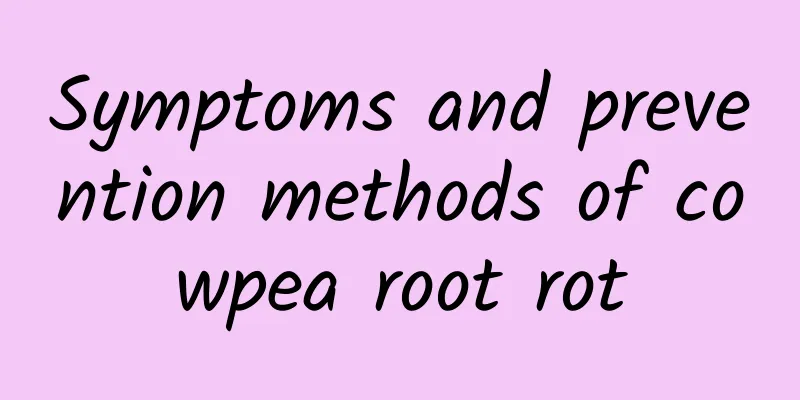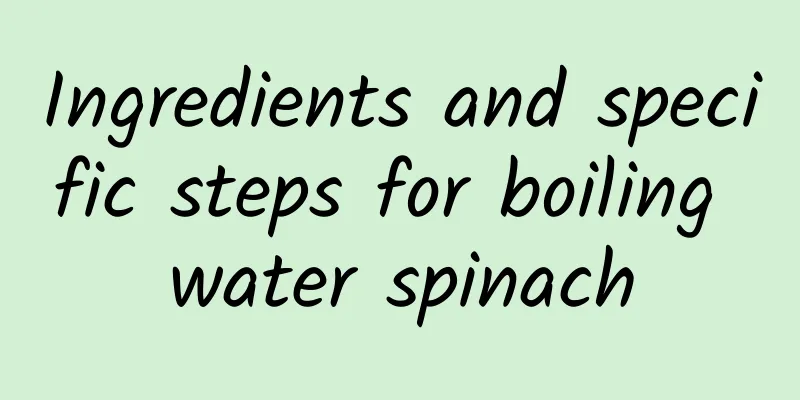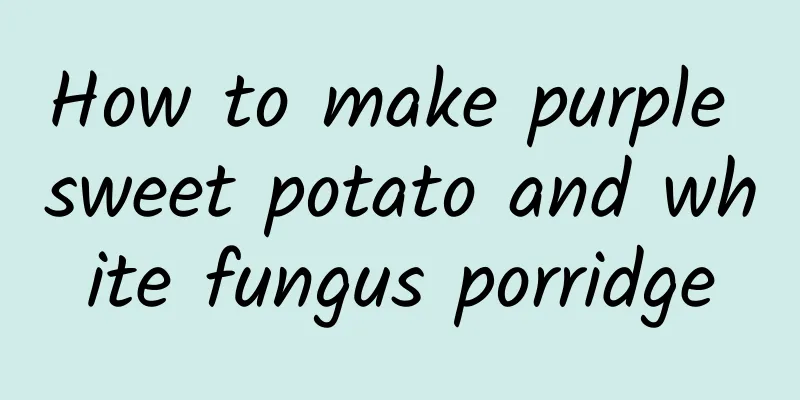Symptoms and prevention methods of cowpea root rot

|
What should we do if cowpea root rot occurs when we plant cowpea? Here we will tell you how to better prevent and treat cowpea root rot. Main symptoms of cowpea root rotCowpea root rot mainly harms the main root and rhizome of cowpea. Brown lesions begin to appear on the root tip, extending from the lateral roots to the main root, causing the entire root system to necrotize and rot. When the diseased roots are dissected, the vascular bundles are reddish brown and can extend to the rhizome. When the main root rots, the aboveground part of the plant also wilts and even dies; it is prone to high temperature and high humidity, and is more serious in rainy autumn, poorly drained, heavy clay low-lying land, and continuous cropping land. Cowpea root rot prevention and control measures1. Carry out reasonable crop rotation, select disease-resistant varieties, and soak seeds with new lipid film before sowing; implement high-bed cultivation or deep-ditch narrow-bed cultivation, clean the ditches and drain water frequently to reduce humidity; strengthen seedling management, and apply potassium permanganate plus new lipid film after emergence to prevent root rot in the seedling stage, and spray new lipid film to protect the seedlings from growing healthily. 2. Strengthen management, water and apply fertilizer in time according to the soil moisture conditions, spray Flower King No. 3 to inhibit the crazy growth of plants and promote the differentiation of flower buds. At the same time, spray Vegetable and Fruit Zhuangdi Ling in time during the flowering and podding period to enhance the quality of pollen fertilization, increase the cycle fruit setting rate, promote fruit development, avoid deformities, improve uniformity, improve quality, and ensure continuous bumper harvests of vegetables and fruits. 3. For chemical control, promptly remove diseased plants and take them out for centralized burning. According to plant protection requirements, spray carbendazim, wettable powder of anti-mildew and other targeted control measures. At the same time, spray new lipid film to enhance the efficacy of the medicine. In serious cases, use targeted pesticides plus new lipid film to irrigate the roots, once every 7-10 days, and water 4-5 times. |
<<: How to make fish-flavored eggplant casserole
>>: Cowpea root knot nematode disease
Recommend
How to drink monk fruit soaked in water
Monk fruit is a fruit with high nutritional value...
The efficacy and function of jasmine and the medicinal value of jasmine
Jasmine is a very beautiful and generous ornament...
How to grow Camellia claspingii How to grow Camellia claspingii
Camellia claspingii is a beautiful ornamental pla...
Tomato meat sauce
The nutrients contained in tomato meat sauce are ...
How is Daiwa Securities Group? Daiwa Securities Group reviews and website information
What is the website of Daiwa Securities Group? Dai...
The benefits of drinking raisins soaked in water
Raisins are a kind of dried fruit that many peopl...
How to use aloe vera on your face The correct way to apply fresh aloe vera on your face
Aloe vera is not only an evergreen ornamental pla...
How to wash grapes? The correct way to wash grapes
Every summer, grapes ripen and are picked and shi...
How to prune African jasmine How to prune African jasmine
African jasmine has a plump and beautiful plant s...
What are the benefits of planting Wanchongshan
Wanchongshan is a green succulent plant that many...
How long is the shelf life of milk?
With the development of social modernization, peo...
Why do fruits go bad? Why do foods go bad?
Fruit is a kind of food that people eat every day...
The efficacy and function of pomegranate seeds
Pomegranate is a composite fruit, which is made u...
How is the American College Advisor Network? American College Advisor Network reviews and website information
What is American College Consulting? American Coll...
The difference between cherries and cherries Which one is better?
Cherries and cherries are like twin brothers. Man...









